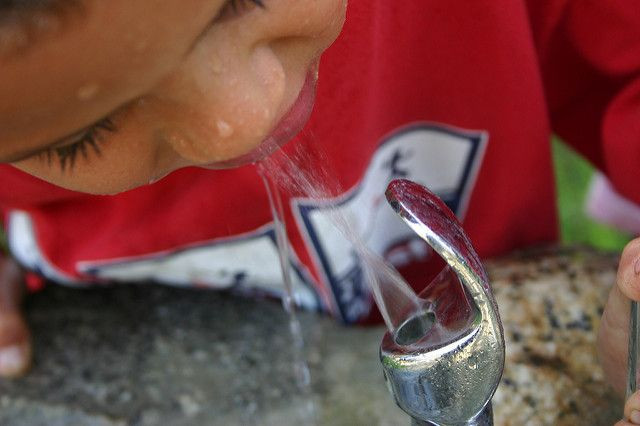Does Drinking Water Need A Disinfectant In Order To Be Safe? It's Complicated, Say Scientists

The recent disaster in Flint, Mich., where contamination rendered public water unsafe to drink and disturbed the sleep of many citizens — not just those who reside in the post-industrial city. Though many Western nations share similar methods for safeguarding drinking water, not all of them insist on the use of residual disinfectants as is done in the United States. Which method, then, is best?
The authors of an article in Science magazine suggest a simple answer is impossible, with so many different factors to weigh. However, they do note the country with the lowest risk of a waterborne disease outbreak is not the U.S.
How it Works
Viruses and bacteria are often found in the source water used in the public drinking supply. To kill these bugs, the authors explain, the U.S. along with other countries including the United Kingdom require the use of a disinfectant, such as chlorine. The term "residual disinfectant," however, refers to the pathogen-killing chemicals that remain active in the water even after the disinfecting process. The presence of a disinfectant can lead to corrosion of the infrastructure and, even worse, the formation of what are known as carcinogenic disinfection byproducts (trihalomethanes, haloacetic acids, chlorite, and bromate).
One more problem: disinfectants ruin water’s pure taste.
As the authors explain, several European countries, including Switzerland, the Netherlands, Austria, and Germany, commonly deliver drinking water to their citizen consumers without a residual disinfectant. In circumstances where source water protection is adequate, treatment is sufficient, and the distribution system is maintained well, these safeguards can be relied upon for safety, public authorities believe. However, when one of these elements is missing or improperly managed, disinfectants will be added to water to maintain safety.
According to the authors, little direct evidence proves residual disinfectants prevent drinking water-related disease outbreaks. Which method, then, is better?
Safety, Minus (Some) Chemistry
Seeking to compare the different approaches, Dr. Fernando Rosario-Ortiz, UC Bolder, and his colleagues examined waterborne outbreak data from the Netherlands, the U.K., and the U.S. in recent years. The Netherlands, despite a lack of residual disinfectants, has the lowest risk of waterborne disease, Rosario-Ortiz and his colleagues discovered.
The authors suggest that the country’s recent replacement of more than half its water pipes may contribute to high safety levels. By comparison, both the U.S. and U.K. systems are running on "expired" pipes. As pipes age, Rosario-Ortiz and his co-researchers added, leaking and reduced pressure increase the chances of bacterial contamination. Leakage rates are recorded as 6 percent in the Netherlands, compared to 25 percent in the U.K. and 16 percent in the U.S., they said.
Although more data and analysis is needed, the authors conclude evidence from Europe suggests safe water can be delivered without residual disinfectants as long as the right infrastructure and safety techniques are in place.
This may be welcome news in Flint, where experts struggle to restore safe drinking water.
The trouble there began in April 2014. At that time, the city changed its water supply from Lake Huron to the Flint River, while awaiting a new pipeline due in 2016. Shortly after the switch, residents grew concerned about the color, taste, and odor of their water. Following reports of skin rashes and children with elevated blood levels of lead, water tests detected Escherichia coli in the distribution system. On Oct. 16, 2015, Flint switched back to the original supply, and on Dec. 14, 2015, Mayor Karen Weaver declared a state of emergency.
According to NPR, the first issue tackled in the aftermath of this crisis is the city's system of corroded pipes. Considering the work of Rosario-Ortiz and his colleagues, this seems the proper place to start.
Source: Rosario-Ortiz F, Rose J, Speight V, von Gunten U, Schnoor J. How do you like your tap water? Safe drinking water may not need to contain a residual disinfectant. Science Magazine. 2016.



























